You’ve probably come across the term UNESCO World Heritage before. But do you really understand what UNESCO World Heritage means? Given that Iran’s Railway and Oramanate have recently joined this esteemed list, in this blog post at Parsi Tours Iran Travel Agency we’ve decided to delve into this heritage and take a comprehensive look at Iran’s UNESCO World Heritage sites together. So, stick around.
What is UNESCO World Heritage?
UNESCO World Heritage comprises a collection of cultural and natural sites registered under the UNESCO World Organization by a committee bearing the same name, the UNESCO World Heritage Committee. Under this convention, member countries of UNESCO can propose their historical, natural, and cultural landmarks for inclusion in the UNESCO World Heritage List. Once these sites are registered, their preservation becomes the collective responsibility of all member countries.
Italy leads the pack with the highest number of entries on the UNESCO World Heritage List, boasting 58 sites. As of 2021, Iran has made its mark with 26 entries, including the recent additions of Iran Railway and Oramanate.
Criteria for Inclusion in the UNESCO World Heritage List
Any location aiming for inclusion in the UNESCO World Heritage List must satisfy at least one of the following criteria. There are six criteria for cultural sites and four for natural sites.
Natural Criteria:
- It constitutes a unique natural phenomenon with extraordinary context and aesthetics.
- It serves as an exceptional example of geological history’s stages and changes.
- It exemplifies significant environmental and biological processes in the evolution and development of terrestrial, coastal, and marine ecosystems and plant and animal communities.
- It incorporates natural habitats of vital importance in terms of biodiversity and endangered species.
Cultural Criteria:
- It represents a masterpiece of human creativity and ingenuity.
- It embodies the exchange of human values over time within a cultural region in terms of advancements in architecture, technology, urban planning, or landscape design.
- It stands as a unique or, at the very least, an exceptional testament to a cultural tradition or a living or extinct civilization.
- It constitutes an outstanding example of architecture or technology representing a significant stage in human history.
- It showcases the profound interaction between humans and their environment or embodies a culture.
- It bears a direct or concrete connection to events, life traditions, thoughts, ideas, or artistic or literary works of universal significance.
Iran’s UNESCO World Heritage Sites
Iran ratified the UNESCO World Heritage Convention in February 1975. From that date onwards, Iran has seen 26 cultural and natural sites included in this prestigious list. The first inclusions occurred in 1979 and featured Naqsh Jahan Square of Isfahan, Takht-e Jamshid, and ChoghaZanbil. Below, we introduce these 26 registered Iranian sites in the order of their registration. Keep reading for the details.
ChoghaZanbil Ziggurat, Khuzestan, 1979
Nestled amidst the ancient sands of Khuzestan, Iran, the ChoghaZanbil Ziggurat is a captivating testament to the glory of ancient Mesopotamian civilization. This remarkable Iran UNESCO World Heritage Site, dating back to the 13th century BC, stands as a true architectural marvel. As you approach this awe-inspiring structure, you’ll be struck by its sheer scale and the intricate craftsmanship of its mud-brick construction.
The ziggurat, a step pyramid of sorts, once served as a sacred temple dedicated to the Elamite god Inshushinak. The layers of history that have accumulated here over millennia seem to whisper their secrets as you explore its sun-baked chambers and staircases. Chogha Zanbil is not just a destination; it’s inviting you to step back in time and marvel at the ingenuity of our ancient ancestors. So, if you’re a history enthusiast or simply a curious traveler, be sure to add Chogha Zanbil Ziggurat to your bucket list – it’s an extraordinary experience that will leave you in awe of the mysteries of the past.
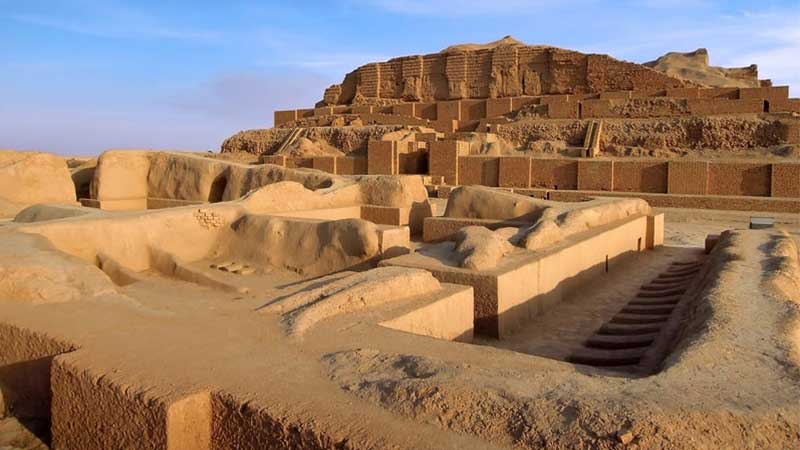
ChoghaZanbil Ziggurat, Khuzestan, 1979
Takht-e Jamshid, Fars, 1979
Takht-e Jamshid, more commonly known as Persepolis, is a true jewel of Iran’s historical heritage. As one of Iran’s UNESCO World Heritage Sites, located near Shiraz, Persepolis is a mesmerizing window into the ancient Achaemenid Empire. As you wander through Persepolis, you can’t help but be enchanted by the towering columns, intricately carved reliefs, and the sheer scale of this archaeological wonder.
Built over two and a half millennia ago, it once served as the ceremonial capital of Persia, hosting kings and dignitaries from around the world. The stories etched into the stones here seem to come alive, telling tales of an era filled with magnificence and power. Whether you’re a history buff or simply seeking a glimpse into the past, Persepolis is a must-visit destination that will leave you in awe of the rich history and cultural heritage of Iran.
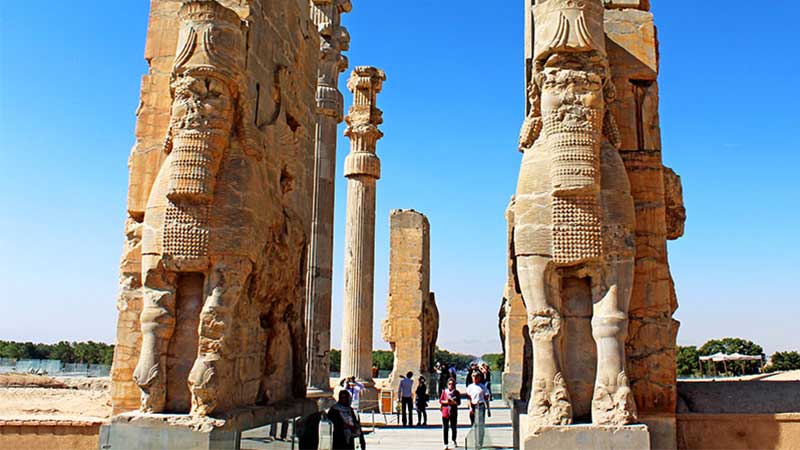
Takht-e Jamshid, Fars, 1979
Naqsh-e Jahan Square, Isfahan, 1979
Naqsh-e Jahan Square is a rectangular plaza in the heart of the picturesque city of Isfahan, surrounded by Safavid-era buildings. The square, as it appears today, dates back to the rule of Shah Abbas of the Safavid dynasty. Prominent structures within Naqsh-e Jahan Square include Ali Qapu Mansion, Imam Mosque, Sheikh Lotfollah Mosque, and Qaysarieh Palace.
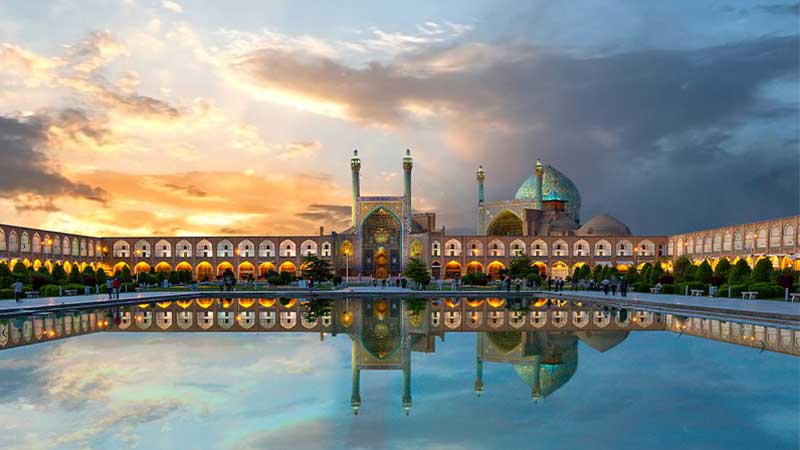
Naqsh-e Jahan Square, Isfahan, 1979
Takht-e Soleyman, West Azerbaijan, 2003
Takht-e Soleyman stands as one of most peculiar Iran’s UNESCO World Heritage sites. Located near Takab and Takht-e Soleyman village in West Azarbaijan province, this historical complex was built around a natural lake. It holds associations with the Parthian, Sasanian, and Ilkhanid periods and features the iconic fire temple and halls from the Sassanid era.
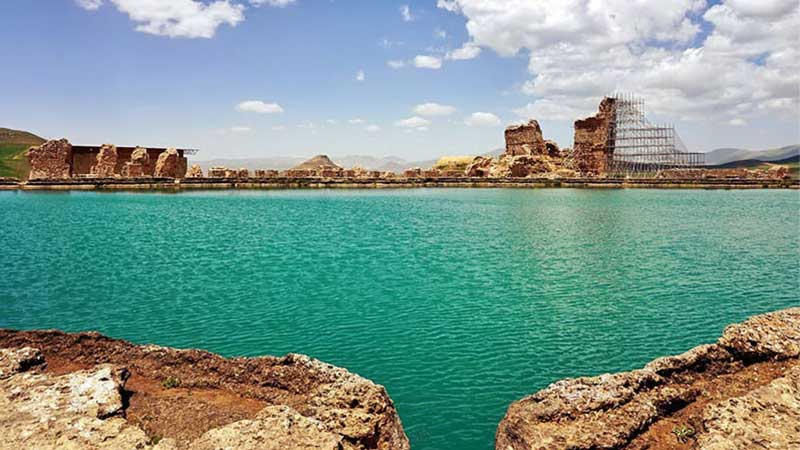
Takht-e Soleyman, West Azerbaijan, 2003
Bam Citadel “Arg-e Bam” and its Cultural Landscape, Kerman, 2004
The Bam Citadel, situated in Bam city, Kerman province, has ties to both the Parthian and Achaemenid periods. This historical structure was inhabited until the end of the Qajar era but was tragically destroyed by a 6.6-magnitude earthquake in 2003.
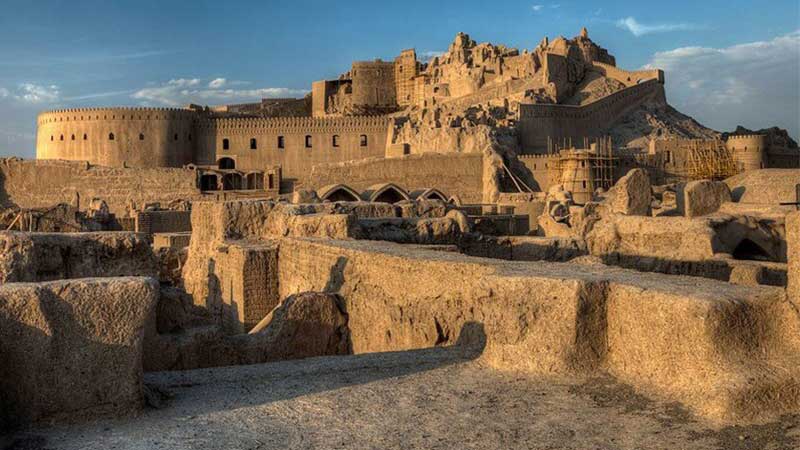
Bam Citadel “Arg-e Bam” and its Cultural Landscape, Kerman, 2004
Pasargadae complex, Fars, 2004
Located in the heart of Iran’s Fars province, the Pasargadae complex is an extraordinary historical site that offers a journey back in time to the Achaemenid period. This Iran’s UNESCO World Heritage Site boasts a vast collection of ancient remnants that paint a vivid picture of the Persian Empire’s beginnings. As you wander through lush gardens adorned with simple yet elegant stone pathways, you’ll find the modest yet immensely and historically significant Tomb of Cyrus the Great.
Nearby, the Pasargadae palace complex showcases the remarkable architecture of the time, with its grand columns, expansive courtyards, and intriguing structures like the Twelve Bridge Palace, Bar-am Palace, exclusive palace, royal garden pavilions, and fountains. The complex also reveals the Kambojie Tomb, Tel Takht defensive fortifications, Mozafari caravanserai, and a holy area, all of which offer fascinating insights into the past. Pasargadae is not just a historical site; it’s a living testament to the rich history and cultural heritage of ancient Persia, making it a must-visit destination for history enthusiasts and curious travelers alike.
Soltaniyeh Dome, Zanjan, 2005
The Soltaniyeh Dome, also known as the tomb of Muhammad Khodabandeh, was constructed between 1302 and 1312 near Zanjan, in the city of Soltaniyeh. This architectural masterpiece as one of Iran’s UNESCO World Heritage Sites stands out due to its unique dome height and water color.
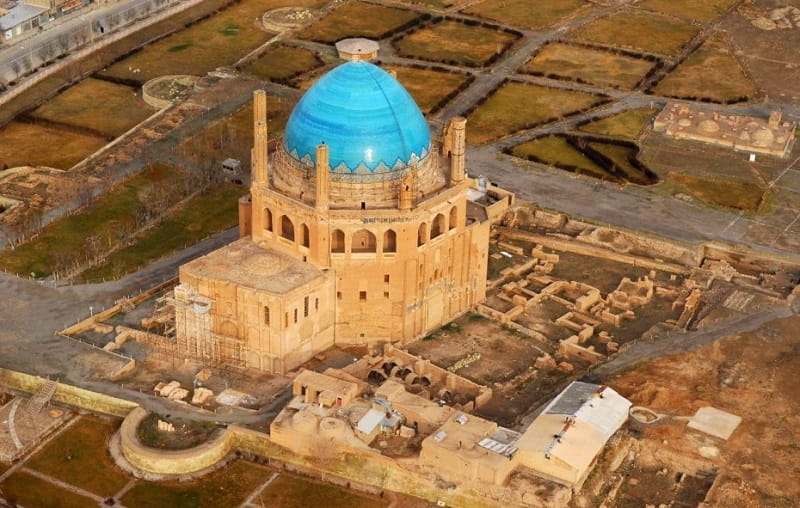
Soltanieh Dome in Iran
Bisotun Area, Kermanshah, 2006
This region is home to the world’s largest stone inscription and one of Iran’s UNESCO World Heritage Sites, showcasing the earliest known Iranian text from the Achaemenid period. You’ll find the Bisotun (Bistoon or Behistun) stone inscriptions about thirty kilometers from Kermanshah city, on the slopes of Bisotun Mountain.
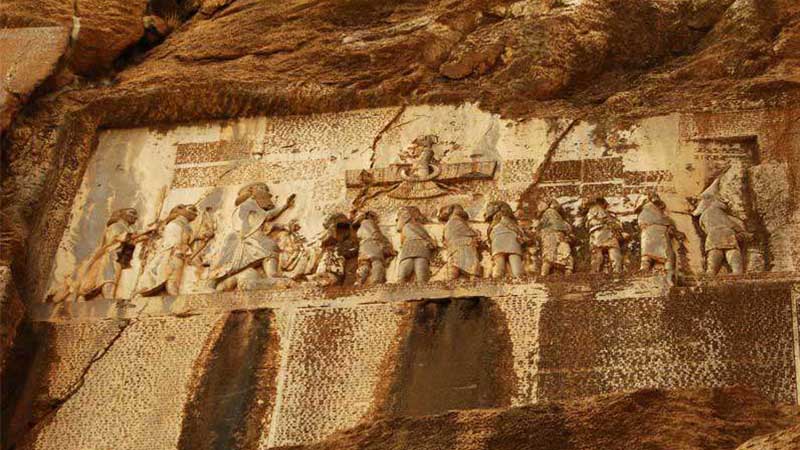
Biston Area, Kermanshah, 2006
Collection of Churches in Azerbaijan, 2008
Comprising three Armenian churches, including Saint Thaddeus Cathedral, St. Stephen’s Church, and Zor Zor Church, this complex spans West Azarbaijan and East Azarbaijan provinces and consists one of Iran’s UNESCO World Heritage Sites. These churches, constructed between the 7th and 14th centuries, have undergone numerous renovations over time.
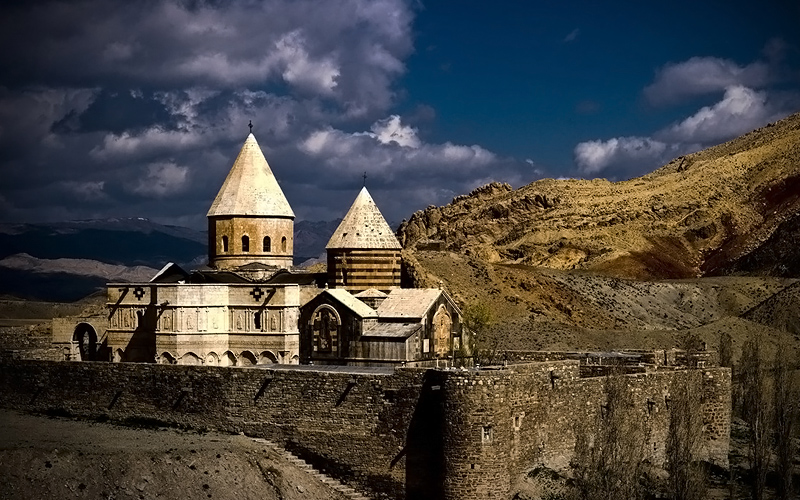
Saint Thaddeus Cathedral in Iran
Shushtar Historical Hydraulic System, Khuzestan, 2009
Dating back to the Sassanid era, the Shushtar Historical Hydraulic Systems were engineered to harness water power for industrial mills. The complex encompasses mill buildings, waterfalls, canals, colossal water tunnels, and Sika, a recreational area.
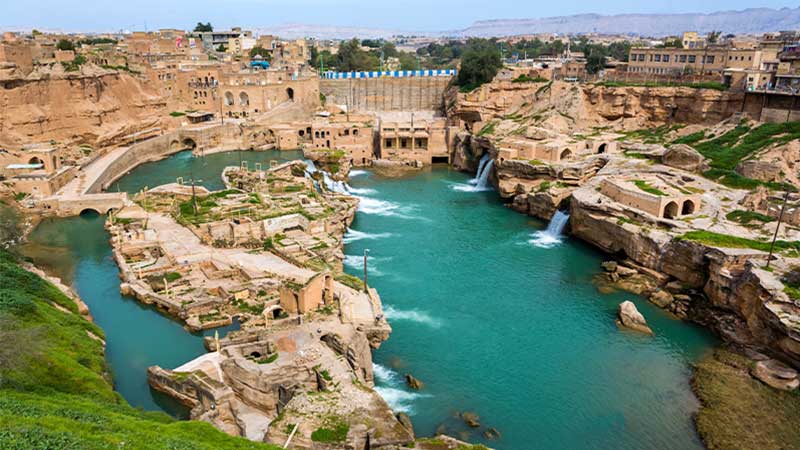
Shushtar Historical Hydraulic System, Khuzestan, 2009
The Historical Market Complex of Tabriz, East Azerbaijan, 2010
Tabriz market stands as Iran and Asia’s largest indoor market. Encompassing an area of approximately one square kilometer, it ranks as the world’s largest indoor market. This bazaar comprises numerous markets, timchehs, serahs, and caravanserais, showcasing Iranian architecture at its finest.
Sheikh Safi al-Din Khānegāh and Shrine Ensemble, Ardabil, 2010
The unique tomb complex of Sheikh Safi al-Din, constructed in 735 AH, was named after the renowned mystic Sheikh Safi al-Din Ardabili, an ancestor of the Safavid kings. During the Safavid era, the mausoleum was exquisitely adorned under the supervision of master artisans from that period.
Collection of Iranian Gardens, 2011
This collection encompasses the distinctive architecture, layout, and design of Iranian gardens. The Pasargadae garden serves as the origin of Iranian garden architecture. Among the Iranian gardens gracing the UNESCO World Heritage list are Pasargad, Eram, Chehlstun, Fin, Abbasabad, Bagh Shazdeh, Daulatabad, Pahlavanpur, and Akbariyeh gardens.
Conclusion
In conclusion, Iran’s UNESCO World Heritage Sites present a fascinating tapestry of history, culture, and architecture that captivates visitors from around the world. From the ancient ruins of Persepolis to the stunning Islamic architecture of Isfahan, these sites offer a unique glimpse into the country’s rich heritage. While we have explored some of the most iconic locations in this part, the story doesn’t end here. Iran’s cultural landscape is vast and varied, and there are many more treasures to discover. In the next part of our article, we will delve deeper into other equally mesmerizing sites that continue to uphold Iran’s legacy as a cradle of civilization. Stay tuned for more on this journey through Iran’s historical wonders.



